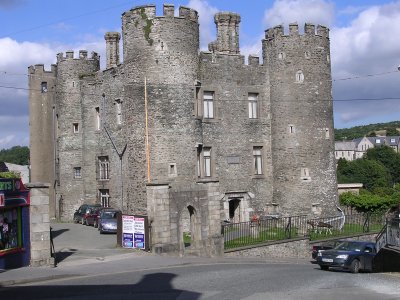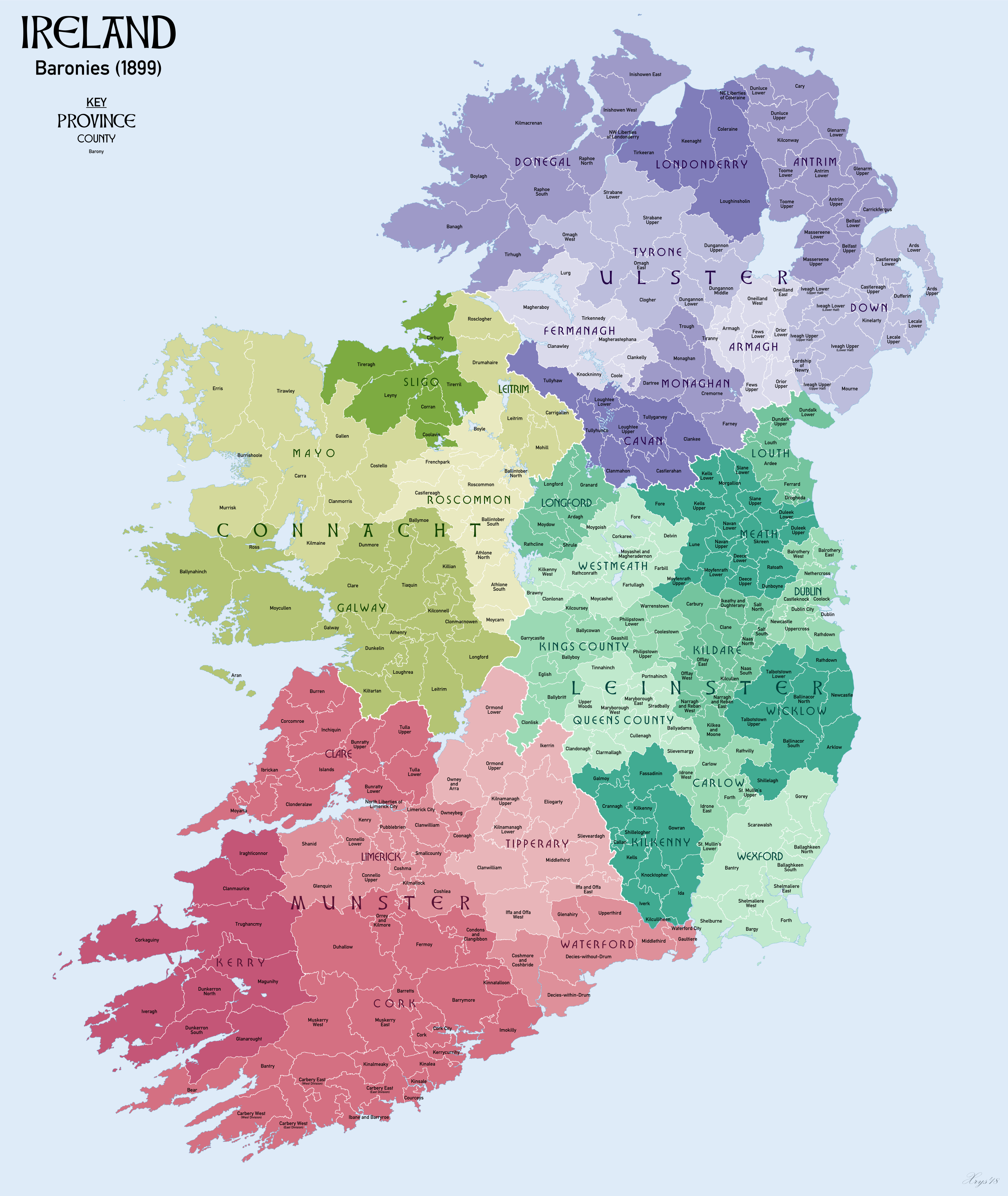|
Shelmalier
Shelmalier or Shelmaliere (Irish: ''Síol Maoluír'', from Old Irish ''Síl Máel Uidir'', "Offspring of Maeleer") is a region in County Wexford, Ireland. It comprises two historical baronies Barony may refer to: * Barony, the peerage, office of, or territory held by a baron * Barony, the title and land held in fealty by a feudal baron * Barony (county division), a type of administrative or geographical division in parts of the Britis ..., East Shelmaliere and West Shelmaliere. The farmers of Shelmalier were accustomed to shooting wild fowl. The area is mentioned in Patrick Joseph McCall's ballads '' Kelly the Boy from Killanne'' and ''Boolavogue''. References Wexford, County Wexford Baronies of County Wexford {{Wexford-geo-stub ... [...More Info...] [...Related Items...] OR: [Wikipedia] [Google] [Baidu] |
John Kelly Of Killanne
John Kelly (Kelly of Killanne) (1773 – c. 25 June 1798) lived in the town of Killanne in the parish of Rathnure, west of Enniscorthy, in County Wexford in Ireland, and was a United Irish leader who fought in the Irish Rebellion of 1798. Kelly was obviously well known to rebel and loyalist alike during the short duration of the Wexford Rebellion but almost nothing is known of him outside this time. He was one of the leaders of the rebel victory at the Battle of Three Rocks which led to the capture of Wexford town but was later seriously wounded while leading a rebel column at the Battle of New Ross. Robert Gogan describes how Kelly was under orders from the Wexford commander Bagenal Harvey to attack the military outposts around New Ross but on no account to attack the town itself. The rebels outnumbered the government forces and so Harvey sent a messenger to give them an opportunity to surrender. The messenger was shot while carrying a white flag. This angered the rebels ... [...More Info...] [...Related Items...] OR: [Wikipedia] [Google] [Baidu] |
County Wexford
County Wexford ( ga, Contae Loch Garman) is a Counties of Ireland, county in Republic of Ireland, Ireland. It is in the Provinces of Ireland, province of Leinster and is part of the Southern Region, Ireland, Southern Region. Named after the town of Wexford, it was based on the historic Gaelic Ireland, Gaelic territory of Uí Ceinnselaig, Hy Kinsella (''Uí Ceinnsealaigh''), whose capital was Ferns, County Wexford, Ferns. Wexford County Council is the Local government in the Republic of Ireland, local authority for the county. The population of the county was 149,722 at the 2016 census. History The county is rich in evidence of early human habitation.Stout, Geraldine. "Essay 1: Wexford in Prehistory 5000 B.C. to 300 AD" in ''Wexford: History and Society'', pp 1 - 39. ''Portal tombs'' (sometimes called dolmens) exist at Ballybrittas (on Bree Hill) and at Newbawn — and date from the Neolithic period or earlier. Remains from the Bronze Age period are far more widespread. E ... [...More Info...] [...Related Items...] OR: [Wikipedia] [Google] [Baidu] |
Old Irish
Old Irish, also called Old Gaelic ( sga, Goídelc, Ogham script: ᚌᚑᚔᚇᚓᚂᚉ; ga, Sean-Ghaeilge; gd, Seann-Ghàidhlig; gv, Shenn Yernish or ), is the oldest form of the Goidelic/Gaelic language for which there are extensive written texts. It was used from 600 to 900. The main contemporary texts are dated 700–850; by 900 the language had already transitioned into early Middle Irish. Some Old Irish texts date from the 10th century, although these are presumably copies of texts written at an earlier time. Old Irish is thus forebear to Modern Irish, Manx, and Scottish Gaelic. Old Irish is known for having a particularly complex system of morphology and especially of allomorphy (more or less unpredictable variations in stems and suffixes in differing circumstances) as well as a complex sound system involving grammatically significant consonant mutations to the initial consonant of a word. Apparently,It is difficult to know for sure, given how little Primiti ... [...More Info...] [...Related Items...] OR: [Wikipedia] [Google] [Baidu] |
Republic Of Ireland
Ireland ( ga, Éire ), also known as the Republic of Ireland (), is a country in north-western Europe consisting of 26 of the 32 Counties of Ireland, counties of the island of Ireland. The capital and largest city is Dublin, on the eastern side of the island. Around 2.1 million of the country's population of 5.13 million people resides in the Greater Dublin Area. The sovereign state shares its only land border with Northern Ireland, which is Countries of the United Kingdom, part of the United Kingdom. It is otherwise surrounded by the Atlantic Ocean, with the Celtic Sea to the south, St George's Channel to the south-east, and the Irish Sea to the east. It is a Unitary state, unitary, parliamentary republic. The legislature, the , consists of a lower house, ; an upper house, ; and an elected President of Ireland, President () who serves as the largely ceremonial head of state, but with some important powers and duties. The head of government is the (Prime Minister, liter ... [...More Info...] [...Related Items...] OR: [Wikipedia] [Google] [Baidu] |
Baronies Of Ireland
In Ireland, a barony ( ga, barúntacht, plural ) is a historical subdivision of a county, analogous to the hundreds into which the counties of England were divided. Baronies were created during the Tudor reconquest of Ireland, replacing the earlier cantreds formed after the original Norman invasion.Mac Cotter 2005, pp.327–330 Some early baronies were later subdivided into half baronies with the same standing as full baronies. Baronies were mainly cadastral rather than administrative units. They acquired modest local taxation and spending functions in the 19th century before being superseded by the Local Government (Ireland) Act 1898. Subsequent adjustments of county boundaries mean that some baronies now straddle two counties. The final catalogue of baronies numbered 331, with an average area of ; therefore, each county was divided, on average, into 10 or 11 baronies. Creation The island of Ireland was "shired" into counties in two distinct periods: the east and south ... [...More Info...] [...Related Items...] OR: [Wikipedia] [Google] [Baidu] |
Orr's Circle Of The Sciences
''Orr's Circle of the Sciences'' was a scientific encyclopedia of the 1850s, published in London by William Somerville Orr. William S Orr & Co. William S. Orr & Co. was a publisher in Paternoster Row, London. It put out the ''British Cyclopædia'' in ten volumes of the 1830s. It also was in business selling engravings (for example the Kenny Meadows illustrations to Shakespeare), and maps, such as a mid-century ''Cab Fare and Guide Map of London'' (c. 1853). The firm was a general commercial publisher, with a specialist area of natural history, and also published periodicals. It was innovative in its use of wood engraving, in its 1838 edition of '' Paul et Virginie''. In children's literature, it published Christoph von Schmid's ''Basket of Flowers'' in an English translation of 1848, in partnership with J. B. Müller of Stuttgart. William Somerville Orr Orr himself was a publishers' agent from the 1830s, and was a close associate of Robert and William Chambers. He printed ... [...More Info...] [...Related Items...] OR: [Wikipedia] [Google] [Baidu] |
Patrick Joseph McCall
Patrick Joseph McCall (6 March 1861 – 8 March 1919) was an Irish songwriter and poet, known mostly as the author of lyrics for popular ballads. He was assisted in putting the Wexford ballads, dealing with the 1798 Rising, to music by Arthur Warren Darley using traditional Irish airs. His surname is one of the many anglicizations of the Irish surname Mac Cathmhaoil, a family that were chieftains of Kinel Farry (Clogher area) in County Tyrone. Life McCall was born at 25 Patrick Street, Dublin, the son of John McCall (1822–1902), a publican, grocer and folklorist from Clonmore near Hacketstown in County Carlow. He attended Synge Street CBS and St. Joseph's Monastery, Harold's Cross, a Catholic University School. He spent his summer holidays in Rathangan, County Wexford where he spent time with local musicians and ballad singers – his mother came from Rathangan near Duncormick on the south coast of County Wexford. His aunt Ellen Newport provided much of the raw material ... [...More Info...] [...Related Items...] OR: [Wikipedia] [Google] [Baidu] |
Boolavogue (song)
"Boolavogue" is an Irish ballad commemorating the campaign of Father John Murphy and his army in County Wexford during the Irish Rebellion of 1798. It was composed by Patrick Joseph McCall in 1898, the centenary of the Rebellion. Topic The ballad covers the victories of Father John Murphy of the village of Boolavogue in County Wexford as he led his parishioners in routing the Camolin Cavalry on 26 May 1798, to defeat the British at Oulart Hill, as well as at Enniscorthy. The Wexford insurgents fought bravely against professional troops, and were eventually defeated at the Battle of Vinegar Hill on 21 June. Father Murphy and the other leaders were hanged. Father Murphy was a priest who at first tried to persuade people not to take part in the rebellion. He changed his opinion and became a reluctant rebel leader after soldiers burned down the homes of his parishioners whom they suspected of rebellion. The Lieutenant Thomas Bookey whose 'regiment' is mentioned in the song wa ... [...More Info...] [...Related Items...] OR: [Wikipedia] [Google] [Baidu] |
Wexford, County Wexford
Wexford () is the county town of County Wexford, Ireland. Wexford lies on the south side of Wexford Harbour, the estuary of the River Slaney near the southeastern corner of the island of Ireland. The town is linked to Dublin by the M11/N11 National Primary Route; and to Rosslare Europort, Cork and Waterford by the N25. The national rail network connects it to Dublin and Rosslare Europort. It had a population of 20,188 according to the 2016 census. History The town was founded by the Vikings in about 800 AD. They named it ''Veisafjǫrðr'', meaning "inlet of the mudflats", and the name has changed only slightly into its present form. According to a story recorded in the ''Dindsenchas'', the name "Loch Garman" comes from a man named '' Garman mac Bomma Licce'' who was chased to the river mouth and drowned as a consequence of stealing the queen's crown from Temair during the feast of Samhain. For about three hundred years it was a Viking town, a city-state, largely indep ... [...More Info...] [...Related Items...] OR: [Wikipedia] [Google] [Baidu] |



